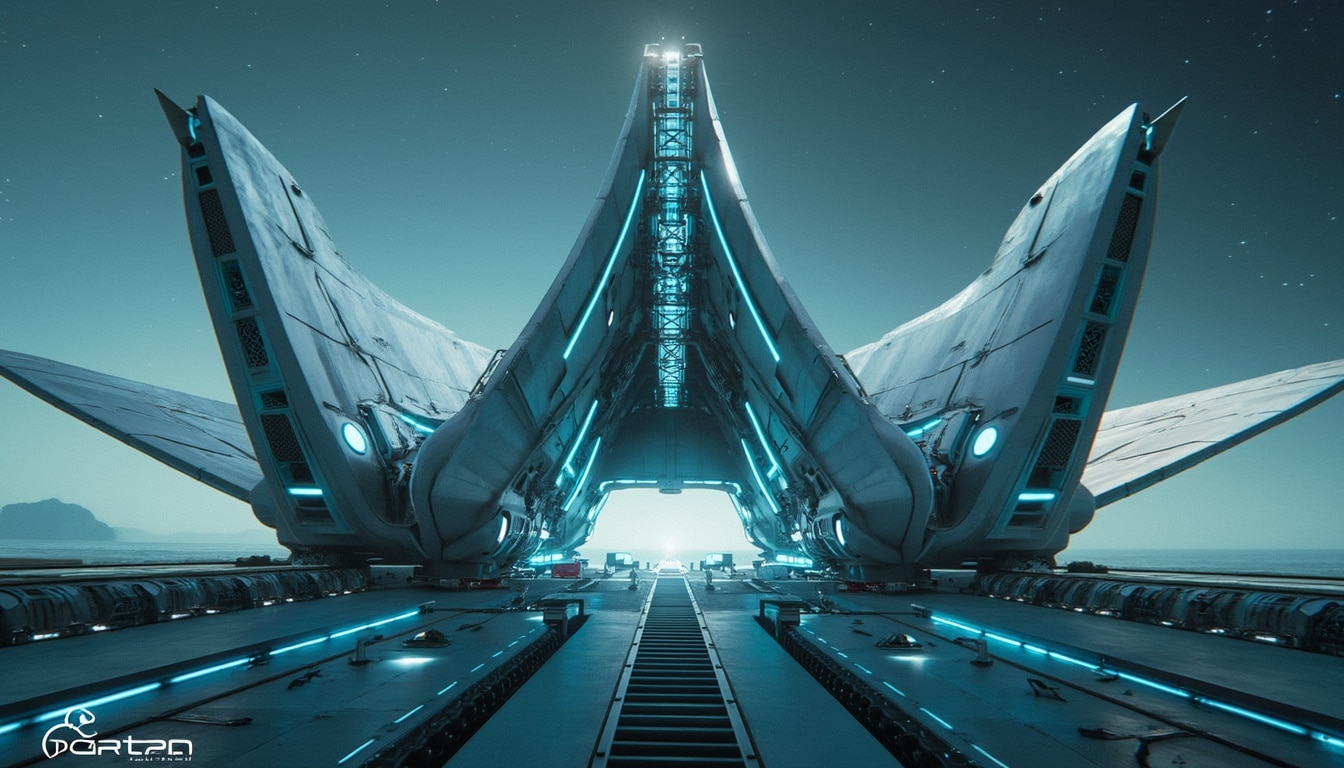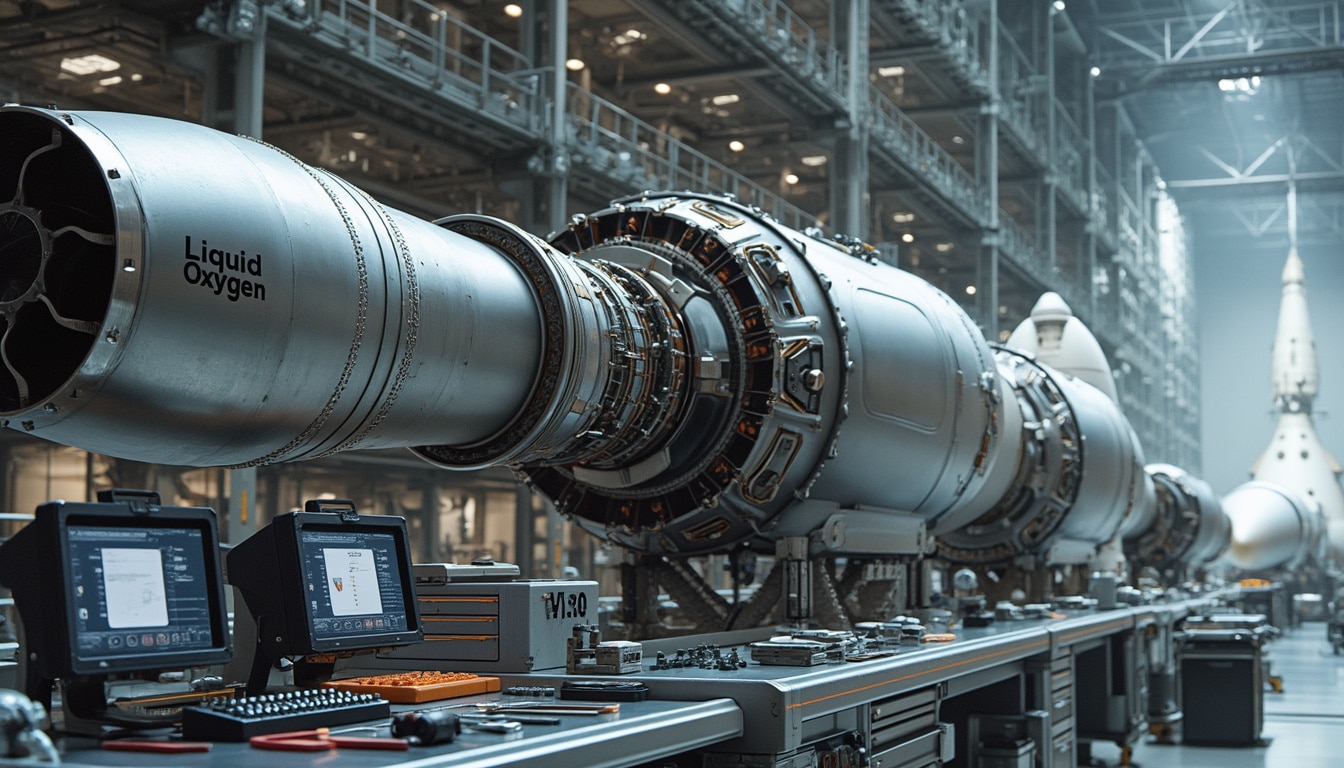SpaceX is at the forefront of revolutionary developments in aerospace technology, with its ambitious plans for Orbital Launch Pad B and the transition from High Bay to Gigabay. The latest advancements highlight the company’s commitment to enhancing its launch capabilities and infrastructure to support a new era of space exploration. With comprehensive upgrades and construction efforts, SpaceX aims not only to facilitate its own missions but also to bolster partnerships with government and private entities, including NASA, Blue Origin, and Boeing, among others.
As SpaceX navigates the complexities of expanding its facilities, the implications extend beyond mere construction. These enhancements are strategically aligned with the growing needs of commercial space travel and scientific research. Through innovative designs and engineering, SpaceX is set to redefine how rockets are built, launched, and managed, paving the way for breakthroughs in space science and exploration.
Orbital Launch Pad B: A New Pillar of SpaceX Operations
The Orbital Launch Pad B represents a cutting-edge addition to SpaceX’s existing infrastructure, specifically designed to handle the new generation of rockets. This facility aims to improve safety, efficiency, and capacity during launch operations. The process has been ongoing, with significant steps taken to ensure its timely completion.

Construction Milestones
In recent weeks, SpaceX has made notable progress on Orbital Launch Pad B. The project kicked off with the pouring of concrete for the flame trench, marking the first major milestone. Beginning on March 17, approximately 300 concrete trucks were used to lay the foundation over a period of around 26 hours. This was just one of several pours needed to establish a robust base for future rocket launches. By March 27, additional concrete operations were carried out for one of the two ramps of the flame trench.
As construction continues, numerous steel pieces arrived to create the trench walls. These pieces will be secured through bolting and welding to the rebar foundations laid earlier. The complexity of this task reflects the high precision demanded in today’s aerospace industry. SpaceX engineers are highly focused on delivering walls that can support the significant weight of the future Orbital Launch Mount.
The facility has also seen advancements in operational technologies, particularly with the development of the Pad B chopsticks — a critical component for rocket recovery and staging. After overcoming initial challenges with the cable train, teams managed to get the chopsticks operational, raising them to the top of the tower. They began performing side-to-side movements to calibrate and prepare for future operations. These intricate systems represent the next level of automation and control in launch facilities.
High Bay, The Gateway to Gigabay
The transition from High Bay to Gigabay marks a significant evolution in SpaceX’s manufacturing and servicing capabilities. High Bay has served its purpose since its construction in late 2020, playing a vital role in the assembly of several rockets and boosters. As the Starship program expands, the need for a more advanced facility has become clear.

Decommissioning High Bay
High Bay has been deconstructed systematically to pave the way for Gigabay. The facility’s effective use to stack and construct rockets like Ship 24 and Booster 7 has left a legacy that transitions into new horizons. A decommissioning team is diligently working to take apart High Bay piece by piece, employing sophisticated cranes to remove structural elements safely. Already, the roof has been dismantled, and the bridge crane has been removed.
Following demolition, the groundwork for Gigabay will commence. The new facility promises to significantly enhance throughput, ultimately aiding SpaceX in achieving its strategic objectives. Gigabay will house 24 workstations, featuring turntables and work stands that enable seamless construction and refurbishment of vehicles. This facility will not only bolster SpaceX’s production capabilities but also support the burgeoning fleet size and complexity of missions.
The Design of Gigabay
The design of Gigabay is tailored for maximum efficiency, focusing on expedited vehicle assembly and servicing processes. The layout will include two bays, creating a streamlined workflow that accommodates multiple projects simultaneously. Advanced bridge cranes, with a capacity of 400 tons, will outstrip the existing equipment at facilities like Kennedy Space Center.
Such innovations mark an industry shift towards more adaptable and efficient manufacturing techniques, which will allow companies like SpaceX, Boeing, and Lockheed Martin to respond swiftly to the growing demands of space travel and exploration. Gigabay is projected to take approximately 18 to 24 months to complete, reflecting the intricate planning and execution required for modern aerospace facilities.
Technological Advances that Drive SpaceX Forward
Innovation in aerospace technology is paramount for successful missions, and SpaceX is committed to integrating the latest advancements into its facilities. From propellant systems to ground support equipment, each component is meticulously engineered to support operational excellence.

State-of-the-Art Propellant Systems
At the heart of Orbital Launch Pad B lies an innovative approach to propellant systems, including Liquid Oxygen (LOX) and Liquid Methane (LCH4) tanks. These systems have been designed to improve efficiency and reduce hazard risks during launch operations. An operational check of a single LOX pump is one notable example, showcasing SpaceX’s dedication to system reliability and performance.
Furthermore, the modification of the venting system plays a critical role in launching preparations. Unlike conventional setups, Pad B employs a separate vent line that collects all exhaust gases, including nitrogen and LOX, through a powerful fan system, further enhancing safety and performance during launches.
Enhanced Infrastructure for Space Traffic Management
As the number of space missions increases, effective coordination becomes essential. NASA and SpaceX are collaborating to implement systems that enhance traffic management in low Earth orbit (LEO) and beyond. This Level 1 collaboration aims to augment situational awareness among various operators, including Blue Origin, Rocket Lab, and Northrop Grumman. Cooperation of this kind will become increasingly vital as space traffic continues to grow.
Tools and technologies developed now will lay the foundation for efficient operations among various partners in the space sector. Ensuring clear communication and precise coordination will facilitate the growth of satellite constellations and crewed missions by companies such as Virgin Galactic and Axiom Space.
Conclusion: The Future of Space Exploration
The developments at SpaceX, highlighted by Orbital Launch Pad B and Gigabay, exemplify a commitment to pioneering the future of space exploration. By investing in state-of-the-art facilities, new technologies, and optimizing manufacturing processes, SpaceX is poised to redefine industry standards.
A collaborative landscape is emerging where entities like NASA, Boeing, and Sierra Nevada Corporation can partner with innovative companies to push the boundaries of science and human spaceflight. The future of space exploration hinges on such initiatives, which not only fulfill our insatiable curiosity but also expand the potential for commercial endeavors in the cosmos.




Leave a Reply